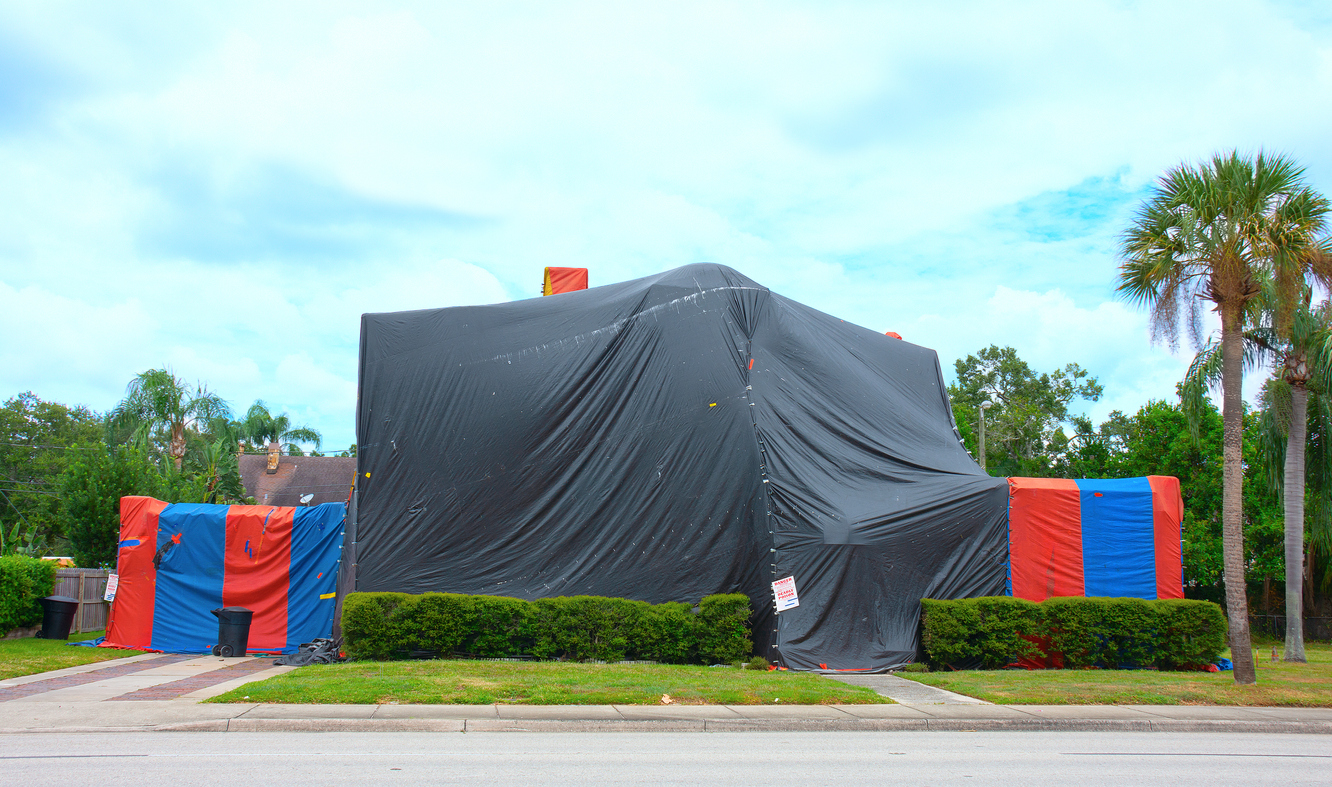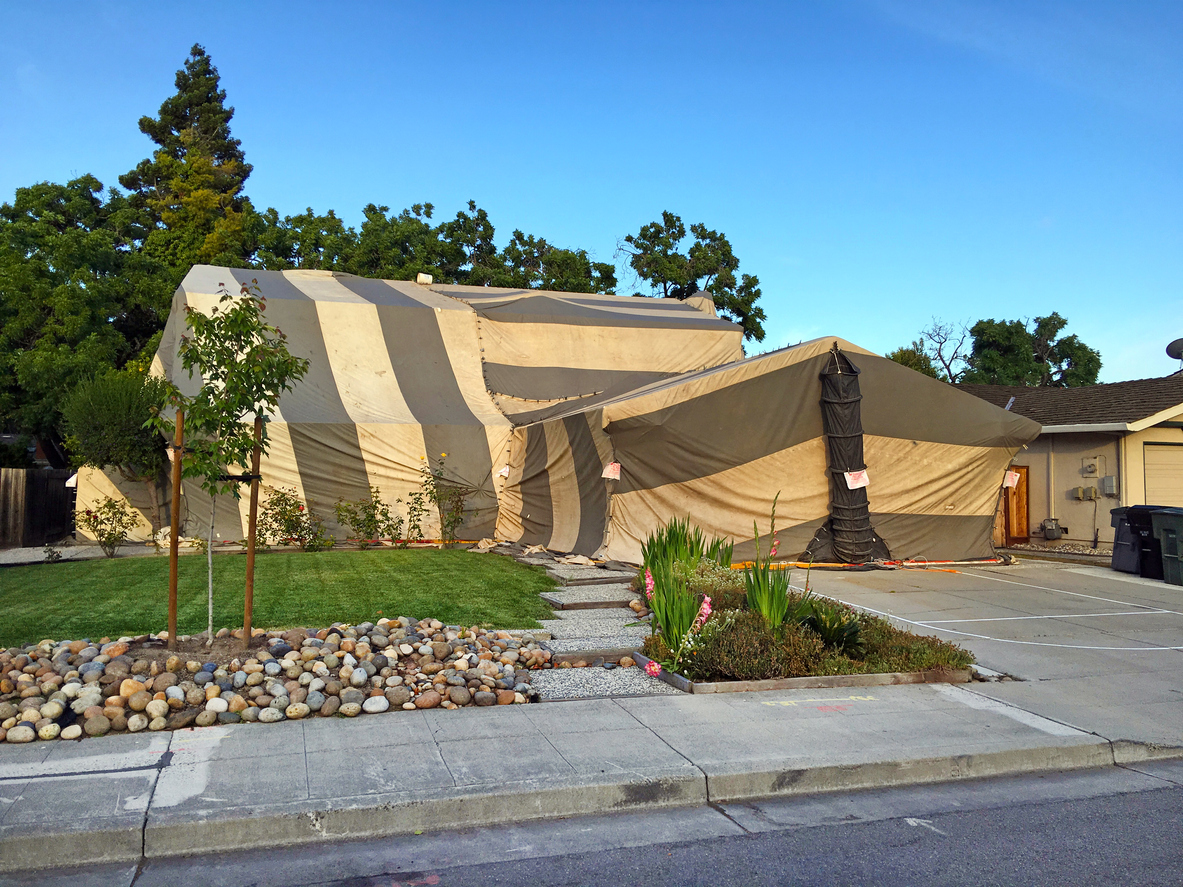

We may earn revenue from the products available on this page and participate in affiliate programs. Learn More ›
Q: Driving home from work the other day, I noticed a huge tent completely covering a house in our neighborhood. What’s going on in there? It looks creepy! Should I be worried?
A: Your neighbors have not turned their place into a circus. They’ve hired an extermination professional to put up what’s called a fumigation tent—an important aspect of effectively destroying bed bugs, termites, rodents, and other pests. The entire process of house fumigation involves sealing the home with a tent, pumping in poisonous gas, allowing the gas enough time to kill the pests, then removing the tent to allow the gas to dissipate.
Tenting for termites, bed bugs, and other pests isn’t typically dangerous for anyone in the neighborhood because the fumigation gas is trapped inside the home. If there is a leak in the fumigation tent then gas can escape, but it dissipates rapidly in the open air. Additionally, fumigating does not chase pests out of the home and into nearby dwellings, because all of the pests are sealed inside with the concentrated fumigation gas. So as long as you do not enter the tented home, you’re safe from the fumigation gas, while the pest population is quickly eliminated.
Related: Solved! What Do Termites Look Like?
A tented house usually indicates a pest infestation.
When a tent goes up in the neighborhood, it can draw the attention of concerned adults and spark the curiosity of kids, but this is simply a sign that the homeowner is dealing with a severe pest problem in a definitive way by paying the cost of hiring an exterminator, instead of using sprays, traps, and other DIY solutions. Bed bug, rodent, and termite tenting involves sealing the premises entirely and pumping in poisonous gas to eliminate the pests.
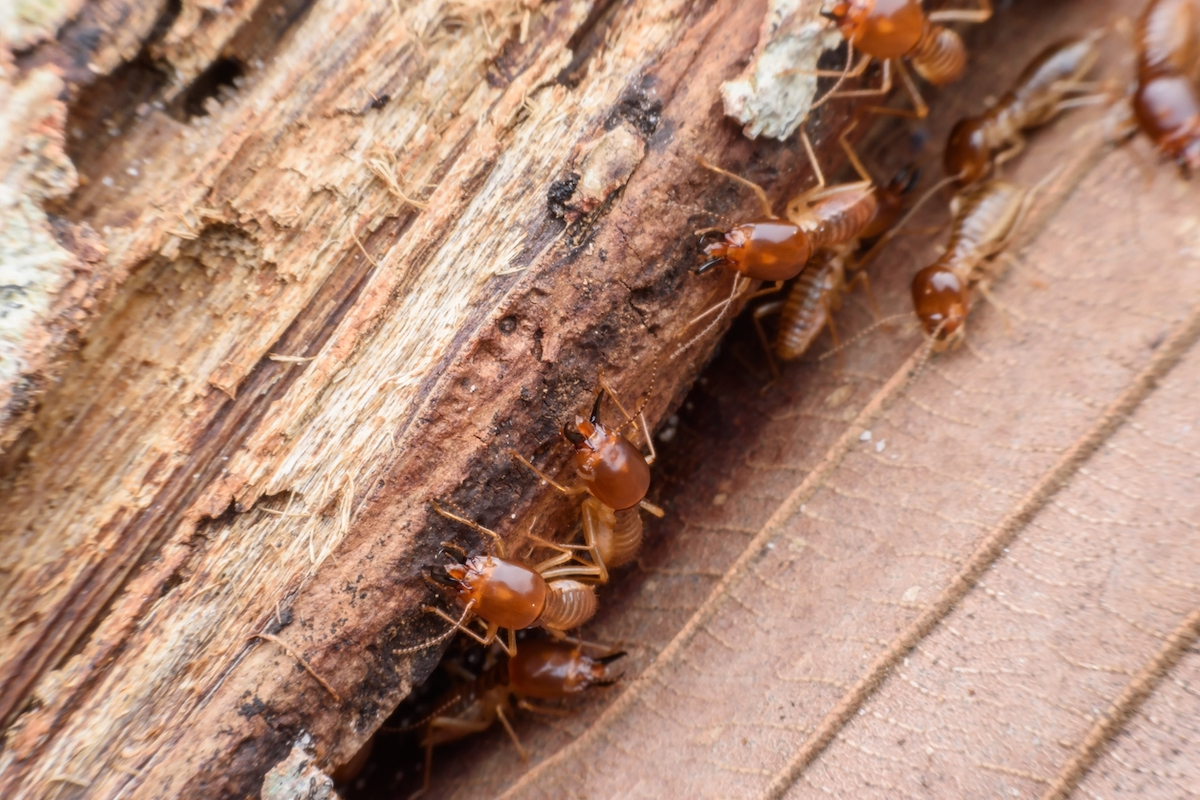
The chemical most commonly used in the tent fumigation process is sulfuryl fluoride, an odorless, colorless toxic gas that shuts down the central nervous system of any living creature trapped inside the home. Some fumigation companies may also use a mixture of sulfuryl fluoride and tear gas to help keep people away from the house during the fumigation process. After a few days, the tent is removed and the gas quickly dissipates in the open air. Occupants are not allowed back into the home until the fumigation company has tested the air and confirmed that the chemical levels are below 1 part per million (ppm).
Tenting keeps pesticides contained during fumigation.
The multicolor tents traditionally used by pest control companies are specifically designed to keep toxic gasses sealed inside the home. These tents are made of heavy vinyl-coated nylon tarpaulins that effectively prevent hazardous gas from leaking out of the home during the fumigation process. Tenting is done, first and foremost, for public safety. Faulty tents are unlikely, since the concentrations of toxic gas must be high enough to be lethal—a leak would drop the concentration to non-lethal levels, and the process would fail. Pest control experts ensure that the house is covered properly and the tent secured with stakes, tape, and plastic sheeting. Most pest control companies also lock the tent to prevent the entrance from being accessed after the gas has been pumped into the home.
Is tent fumigation harmful to people and pets in the neighborhood?
The purpose of tenting a house is to eliminate severe pest infestation problems with a powerful toxic gas that shuts down the nervous system. However, the entire home is sealed with heavy-duty vinyl-coated nylon tarpaulins to prevent the bed bug, rodent, or termite fumigation gas from leaking out of the home. If the home is properly sealed and no one enters the tent, there should be no danger to people and pets in the neighborhood.
Even after the fumigation is complete and the tent is removed, the neighborhood is still safe because the toxic gas rapidly dissipates into the outside air. Consider the carbon monoxide produced by city buses and passing traffic. Humans and pets manage to live with it outside, but that much carbon monoxide concentration would be fatal if it was trapped in a sealed or poorly ventilated space.
Related: Solved! What Attracts Bed Bugs?
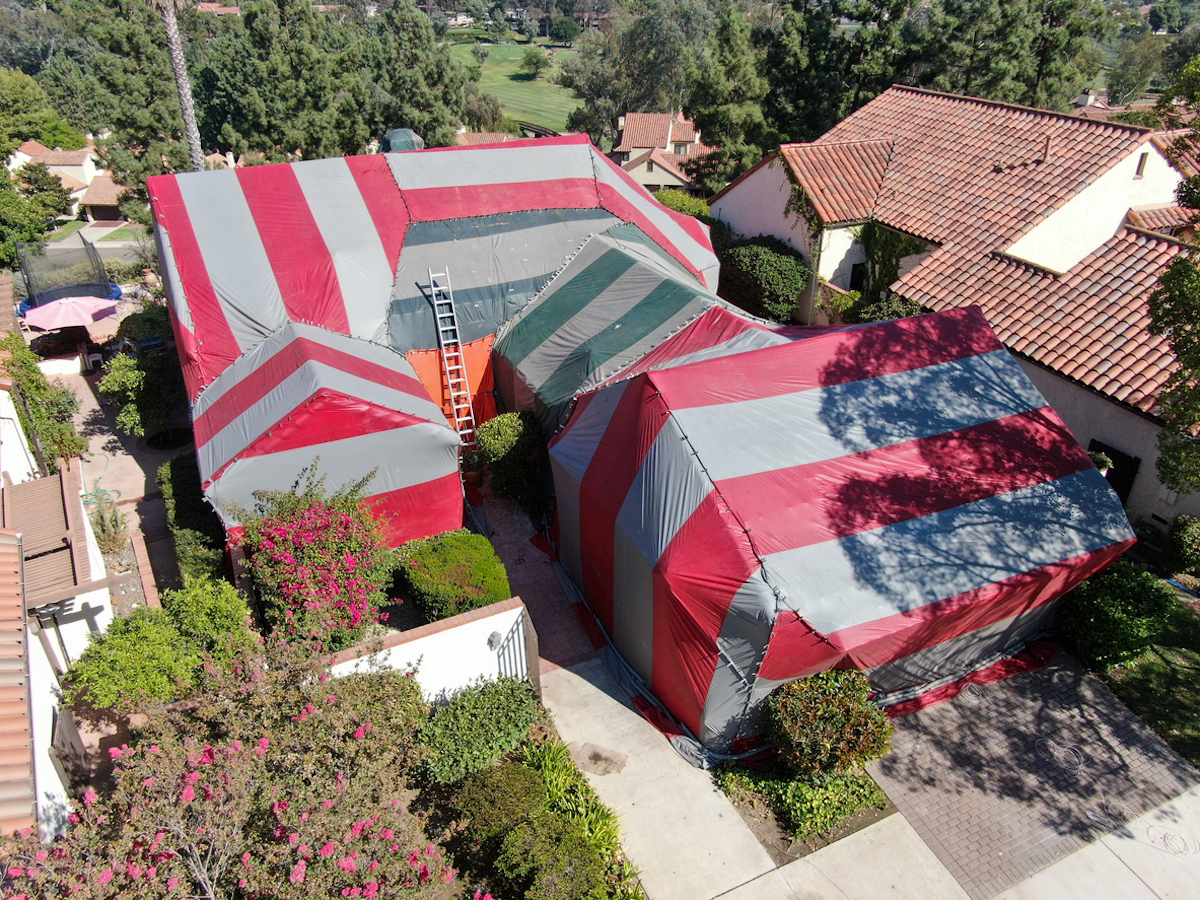
Will a tented house cause pest infestations for nearby homes?
It’s a common misconception that a neighbor’s infestation will spread to nearby homes when the property is tented for fumigation. Tenting seals the infestation inside the home with a powerful toxic gas that kills the entire pest population, so insects and vermin don’t have the opportunity to leave the premises before falling victim to the gas.
The primary reason people believe fumigation causes pest infestations to spread is that when one home has an infestation severe enough to warrant tenting, the invading pests are typically already highly active throughout the neighborhood. And, yes, other homes in the neighborhood may have simultaneously occurring infestations that residents are just noticing because the tent prompted a more careful inspection of the premises.
However, pest infestations can spread. If a neighbor uses over-the-counter pest repellent products, instead of having the home fumigated, for a serious infestation, then there is a high chance that the pests infesting that property will spread to surrounding homes that are not treated with repellent. This means that a fumigation tent actually prevents the spread of pest infestations, while repellents only protect the treated property.
Related: If You See One Mouse, How Many Do You Have?
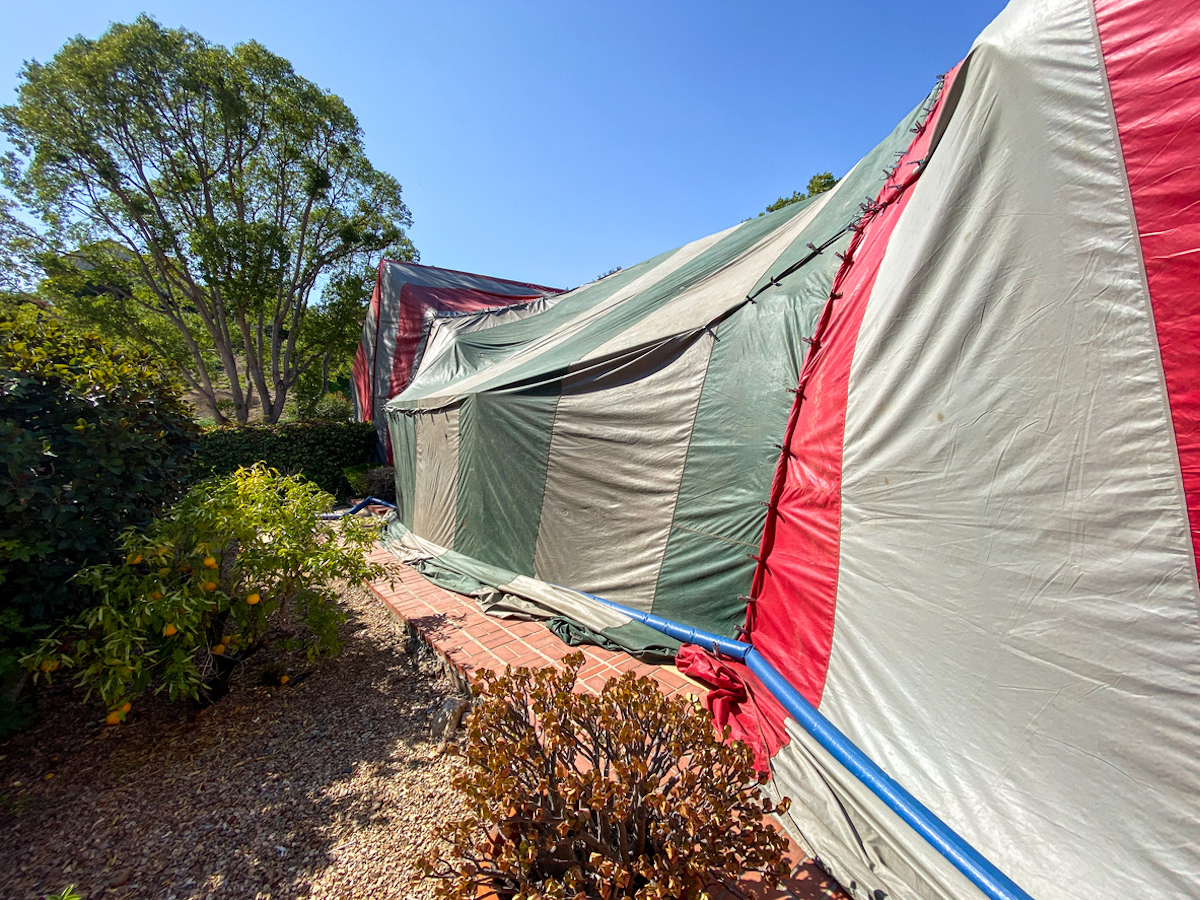
What to do when your neighbor’s house is tented.
Ideally, the rodent, bed bug, or termite fumigation preparation that the pest control company completes prior to tenting the home includes delivering fumigation notice cards or fliers to the houses in the neighborhood. While this neighborhood notification is a legal requirement in a few states (e.g., California), exterminators in most states are not required to do so, which can lead to surprise and concern upon seeing a tent on a neighbor’s house. Fortunately, figuring out how to prepare for termite tenting in the neighborhood is relatively straightforward.
Neighborhood fumigation preparation involves simply staying away from the tented property and advising any neighbors that you see about the situation, just in case they don’t know what the tent indicates. This is especially important for neighbors with children or pets, so they can be sure to keep their more curious family members away from the tent.
It’s also a good idea to check your home for any signs of infestation and consider contacting one of the best pest control companies, such as Terminix, to conduct a thorough inspection. While fumigation tenting doesn’t chase pests into neighboring houses, it is a sign that these types of pests are highly active in the area and could already have invaded your home.
Related: Pesticides and Property Lines: How To Talk to Neighbors About What They’re Spraying
